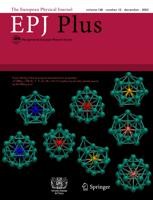Citizen Science: From the cosmos to the classroom
An extensive network of cosmic ray detectors allows high school students in Italy to contribute to cutting-edge particle physics research.
New York | Heidelberg, 18 January 2023

Citizen science projects offer the general public, or segments of that public such as school students, an opportunity to take part in scientific research. The Extreme Energy Events (EEE) Project in Italy is a cooperation between particle physicists studying cosmic rays and school students, and their teachers, throughout the country.
This has the twin aims of bringing cosmic ray research into schools and setting up a country-wide ‘open laboratory’ of particle detectors. One of the lead researchers from the EEE Project consortium, Silvia Pisano of the Italian Centro Fermi and Laboratori Nazionali di Frascati of INFN, Rome, Italy, has summarised the results from about 20 years of this project in a new paper in EPJ Plus.
Cosmic rays are high-energy particles that travel through space at nearly the speed of light; when they come into contact with the earth’s atmosphere they produce a variety of secondary particles that can be detected when they reach ground level. One primary cosmic ray can produce a shower of such particles that completely covers a city the size of, for instance, Bologna. “There are still many open questions about these secondary particles, such as the full details of their energy spectra,” explains Pisano.
The EEE network consists of about 60 detectors or “EEE telescopes” located across Italy, mostly in high schools. Students and their teachers are involved in all aspects of the project: installation and maintenance of the equipment, data collection and analysis, and disseminating the results. “The peculiarity of an experiment designed in this way is that it can look for correlations between events that are hundreds of kilometres apart,” adds Pisano. She and her collaborators are now planning to extend the network to include more schools, including some outside Italy.
Another ongoing development is the design of a mixture of gases for the detectors to replace the powerful greenhouse gas tetrafluoroethane; school students are involved in this and other improvements. “This experiment provides a unique environment for educating future generations in the practice of science,” Pisano concludes.
This is the first paper of the EPJ Plus Focus Point Issue “Citizen science for physics: From Education and Outreach to Crowdsourcing Fundamental Research” which is open for submissions until 30th June 2023. Suitable papers will be published if and as soon as accepted. For further information see the Call for Papers.
Reference: S. Pisano on behalf of the EEE Collaboration. The extreme energy events project. Eur. Phys. J. Plus 137, 1190 (2022). https://doi.org/10.1140/epjp/s13360-022-03331-0
Further Information
For more information visit: www.epj.org
Services for Journalists
The full-text article is available here.
Contact
Sabine Lehr | Springer | Physics Editorial Department
tel +49-6221-487-8336 | sabine.lehr@springer.com
